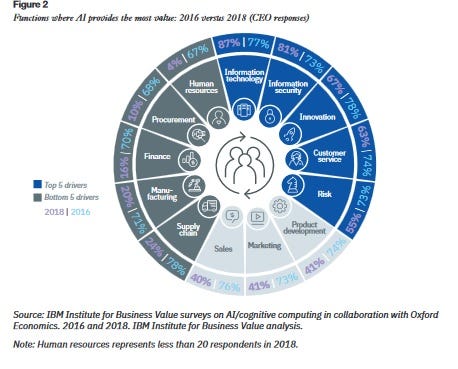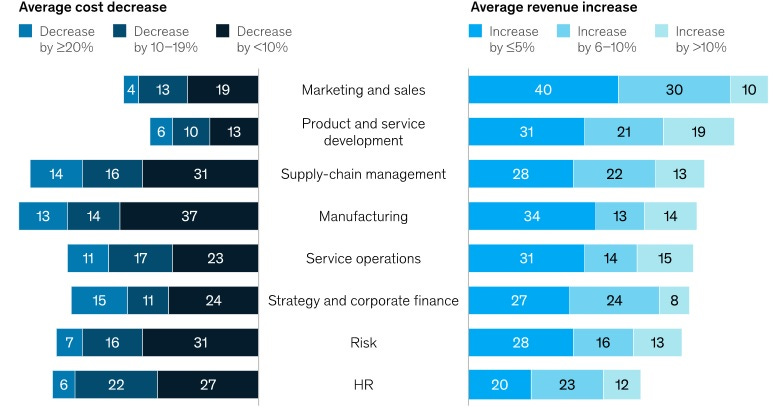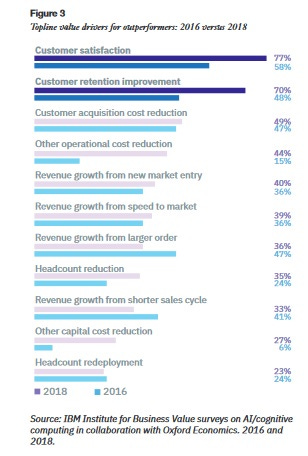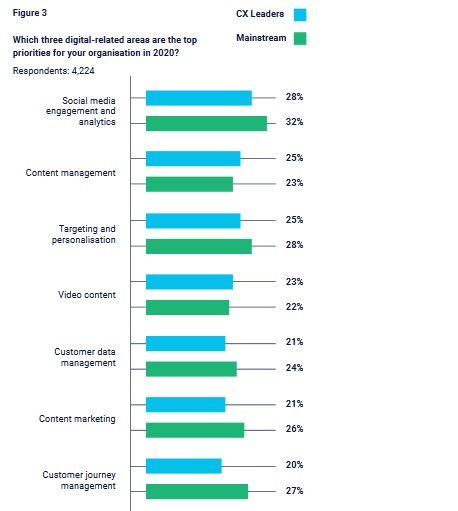How AI is evolving and implementation barriers
Insights from the IBM AI report, McKinsey Global AI survey, and Adobe's 2020 Digital Trends

In the fifth semester of MCA, we had Artificial Intelligence as a subject. The class would happen twice a week at 8 am. And I hardly attended the class because I was super lazy. My actual meeting with AI happened when I watched the Hollywood blockbuster Minority Report in 2002. Fast forward 2020 every trend article by pundits is incomplete if they don’t speak about AI.
I want to find how AI is going to make society better. Let me remove my zen mode and focus on how AI right now is being leveraged, challenges it is facing and try to remove some of the dust from AI.
In 2018 IBM partnered with Oxford Economics to survey C-level executives and top functional leaders about AI and cognitive computing. Based on insights from more 5000 global executives, the study found that 93% of outperformers are now at least considering AI adoption. In 2016 only 33% of organisations were considering implementing AI.
Seeing returns from AI
Successful organizations are moving beyond just testing and experimenting with proofs of concept. As evidenced by their top concerns executives have shifted their attention from worrying about whether to adopt AI (availability of technology) to struggling with how to adopt AI (skills and data).

According to the report: Information technology (IT) and security (IS) functions are the highest priorities selected by most CEOs. IT and IS can benefit from AI-enabled help desk virtual assistants, process automation and threat detection algorithms — and are often the functions responsible for the data initiatives needed to support AI.
The remaining three priorities in CEOs’ top five include innovation, customer service and risk. Customer service is an area in which many organizations have piloted virtual assistant capabilities. And in the area of risk, fraud prevention and detection are critical.
A recent global survey done by McKinsey Global Survey shows a nearly 25% year-over-year increase in the use of AI in standard business processes, with a sizable jump from the past year in companies using AI across multiple areas of their business.
According to the survey done: 63% of respondents report revenue increases from AI adoption in the business units where their companies use AI, with respondents from high performers nearly three times likelier than those from other companies to report revenue gains of more than 10%.

Respondents are most likely to report revenue growth from AI use cases in marketing and sales, product and service development, and supply-chain management. In marketing and sales, respondents most often report revenue increases from AI use in pricing, prediction of likelihood to buy, and customer-service analytics. In product and service development, revenue-producing use cases include the creation of new AI-based products and new AI-based enhancements. And in supply-chain management, respondents often cite sales and demand forecasting and spend analytics as use cases that generate revenue.
Overall, 44% of respondents reported cost savings from AI adoption in the business units where it’s deployed, with respondents from high performers more than four times likelier than others to say AI adoption has decreased business units’ costs by at least 10%, on average.
The two functions in which the largest shares of respondents report cost decreases in individual AI use cases are manufacturing and supply-chain management.
On a regional level, the survey shows significant increases in adoption levels in developed Asia–Pacific, Europe, Latin America, and North America. In Asia–Pacific and Latin America, the shares of respondents who say their companies have embedded AI across multiple functions or business units have nearly doubled since the previous survey.
More about customer
Customer satisfaction and retention improvement have become the topline value drivers for outperformers in 2018. Of course, that does not mean cost is unimportant. Anecdotally, many AI projects have a cost reduction element that underpins the business case — and total respondents ranked operational cost reduction third in importance.

Moreover, many C-suite executives are placing greater emphasis on customer experience (68%) than traditional products and services (19%).
Adobe’s 2020 Digital Trends in partnership with Econsultancy stated clearly that “Customer Experience divides Marketing.” Marketing in 2020 - understanding and serving every individual. The challenge today is managing the complexity of marketing to the individual. Many companies still lack a unified customer profile as they struggle to manage disparate data sources.
Social media engagement and analytics remain the top priority for Mainstream and CX Leaders followed by targeting and personalisation.
Customer journey mapping coupled with content leads to growth. Although the overall movement is in the same direction – towards better understanding and service to the customer – there are intriguing differences in how companies are evolving, investing in customer experience and putting data to work.

Managing the customer’s journey has risen to become a top priority for CX leaders. Used in concert with personalisation (a top-three priority for both), journey management allows marketers to influence the process of being a customer, and in a world where instant, responsive service is the standard, it is often the case that the process is the product.
Importance of data
Adobe states - “This new era of customer experience and expectations, together with evolving laws and infrastructure, is influencing digital marketing and advertising and further shifting the focus to greater trust and transparency.”
According to the IBM study accelerating growth of data is executives’ primary challenge.
“A robust data infrastructure aligned with business architecture that reflects a company’s strategic direction is essential. Our 2018 research revealed that 65% of outperformers capture, manage and access business, technology and operational information on key corporate data with a high degree of consistency across the organization versus 52% of all others.”
Organizations must foster a culture that embraces using data differently, which means open collaboration across business units, functions and IT. However, companies ignore privacy issues at their peril - Two of the top three barriers to AI adoption cited by executives surveyed in 2018 relate to this area: regulatory constraints (60%) and legal/security/privacy concerns about the use of data and information (55%).
Brand’s shrug off data quality issues was also highlighted in Nielsen’s annual marketing report - 2019-2020 Global report. The top priorities for marketers are targeting and reaching an audience with the best creative possible. Audience targeting is ranked at the top by the most number of respondents (53%), followed by ad creative (37%), audience reach (31%) and data quality (28%).

Brands value data quality even less so than agencies do. This could become a problem in the long term.
Barriers in implementing AI
Availability of skilled resources or technical skills remains the biggest concern and it has grown in 2018(63%) from 2016(43%). Regulatory concerns and legal/privacy concerns about the use of data and information remain the other two major concerns in 2018. However, the availability of technology that was one of the biggest concerns in 2016 has drastically improved and so has the degree of customer readiness.

In a 2016 IBM Institute for Business Value study on education and skills, 56% of global executives, educators and policymakers surveyed told us that AI/cognitive computing would have some impact on demand for skills.
Skills now reflect the biggest concern executives have about deploying AI, up to one and a half times from 2016. 63% of executives now cite the availability of skilled resources or technical expertise as the biggest barrier to implementing AI.
As the demand for data scientists and other AI experts increases, employee retention risks also rise. Without a more sustained focus on developing the skills required, AI initiatives face a higher risk of delay between proof of concept, pilot and implementation.
Of course, AI is not the only contributor to a global skills crisis. Other top skills constraints identified by global executives in our global skills survey include advances in other non-AI related technologies, economic globalization, specialization, and changes in business models and regulatory frameworks.
P.S. All these reports presented by companies are themselves competing in the space from consulting to implementation of AI for the organization. So please use your brain when you consume insights shared by such organisations.



